PROJECTS | Exhibitions
Salty Past
Photo exhibition by
Aleksandras Macijauskas and Antanas Sutkus
Exhibition concept: Raminta Jurenaite, Lilijana Stepančič
Galerija Loža (Obalne galerije Piran), Koper (June 6-20, 1997); Mestna galerija Ljubljana (June 30-July 1, 1997)
Organised by SCCA-Ljubljana in co-operation with SCCA-Vilnius.
The exhibition was presented in Koper by Raminta Jurenaite, Director SCCA-Vilnius and in Ljubljana by Barbara Borčić, Director SCCA-Ljubljana.
Salty past
During the "Period of thaw" - in the late 50s - the creation of Antanas Sutkus and Aleksandras Macijauskas made a decisive influence on the photography of the former Soviet Union.
In order to perceive the impact of those works during the period of their creation and first exhibitions one should be aware of the conditions of the period in the former Soviet Union. The Baltic States, which were the last ones incorporated into the Soviet Union, enjoyed greater liberalism in the sphere of art in comparison with the whole empire. However, there existed greater restrictions than in Poland, Czechoslovakia, Hungary or Slovenia. The "period of thaw" diminished the fierceness of totalitarianism but did not abolish it. That period witnessed certain mass psychosis. Almost each representative of intelligentsia was convinced that security services listened to their telephone conversations. Actually, it was not being practiced, because it would have been a too great luxury for the State. Such irrational phobias were caused by some real manifestations of the activity carried out by the KGB and the services associated with it.
Up to the period of the Gorbachev perestroika, people could not go on journeys, there was no freedom of press, there, actually, had been functioning a paralysing system of partial prohibitions and a "positive censorship", which not really pointed out what was prohibited but rather determined what and how one should paint, make films, take photographs, write, publish and show.
In Lithuania, very few artists supported an official state ideology however, the majority of them contributed to it by way of bigger or smaller compromises, "cunning" negotiations or simple silence. In such atmosphere, every frank opinion or a hint would always find a broad response.
The photographs by Antanas Sutkus and Aleksandras Macijauskas as well as by the
like-minded photo artists served as a kind of revival for the public. A political contents in them was reflected indirectly, but its language was lucid enough to understand. Everyday life with its routine troubles returned to the photographs of Sutkus and Macijauskas. The very fact that they disclosed the lack of elementary welfare expressed great courage. The rough truth was perceived as a socially critical allegory.
Raminta Jurenaite, text from the exhibition catalogue
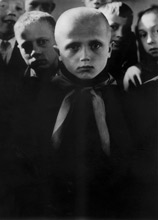 |
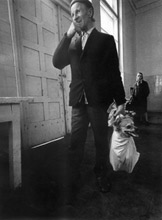 |
Antanas Sutkus,
Pioneer, Ignalina, 1964
|
Aleksandras Macijauskas,
The veterinary clinic N 105, 1980 |
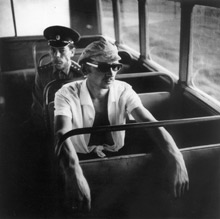 |
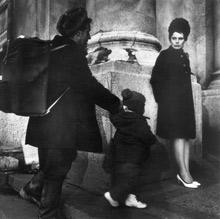 |
Antanas Sutkus,
Without title, Vilnius, 1972
|
Antanas Sutkus,
In the railway station area, Vilnius, 1973 |
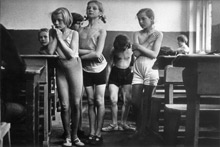 |
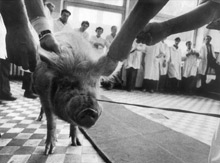 |
Antanas Sutkus,
Village chldren at the competition to the art school, 2. žemaitija, 1969 |
Aleksandras Macijauskas,
The veterinary clinic N 45, 1978
|
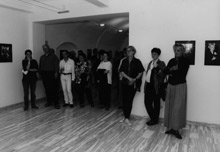 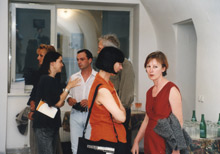
|

